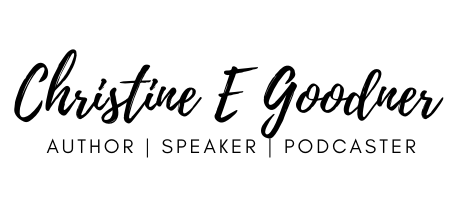This week’s episode of the Time to Practice podcast is the second in a two-part…
Measuring Both the Gap & The Gain
In this mini-episode of the Time to Practice podcast, we’re discussing measuring both the gap & the gain.
Christine Goodner discusses the importance of knowing both how far we’ve come AND where we’re headed. Striking that balance as a musician and an adult supporting a young musician is important. You can read the blog version of this episode below, which will act as this week’s transcript.
To Listen to the full episode you can find the Time to Practice Podcast on Apple Podcasts, Audible , Google Podcasts, or your favorite podcast platform.You can also listen to this episode in it’s audio format through the link below:

Amy Beth Horman on Approaching Music Practice with Gratitude (Part 2) – Time To Practice

When I was thinking about what I wanted to share this week, the book The Gap and The Gain by Dan Sullivan and Dr. Benjamin Hardy came to mind. This is a book that was written by someone who is an organizational psychologist (Dr. Benjamin Hardy) and someone who is an entrepreneur and in the business world (Dan Sullivan) but I can’t help but think of the parallels to learning music and the process of supporting young musicians as they learn.
In the business world and the music world have many parallels, but in music, it is important that we don’t lose sight of where we’re headed:
-We listen to recordings
-Watch performances
-See our teachers demonstrate
We see other students making music at a high level and think “oh I want to play that” or “I want to play LIKE that!”
-We have techniques to learn
And they have to be learned with attention to detail
-We get coaching in lessons and sometimes in practice by a supportive adult about how to improve
And those adults – teachers and caregivers – need to have an idea where we’re not “there yet” which I’m putting in quotes.
We want to notice what we’re striving for and where to improve
In every lesson and every practice, ideally.
If we ONLY looked at how far we’d come from the start, it would be easy to lose sight of where we’re going. It would be like going on a long road trip with no map or GPS. Maybe we’d get really far, but not at all where we wanted to be.
AND
It could be so discouraging if we live only there in the Gap and don’t notice the GAIN too
It could be discouraging to endlessly think of areas for improvement and then conclude that it’s an impossible task.
Research tells us that feeling like a goal is possible – is a huge way to build motivation.
If we think—children and adults alike—that the task before us is futile, it’s hard to find the motivation to do it.
That’s human nature, and we want to avoid that feeling from taking over.
Think back on when your child first started:
Even rest position was a new idea, maybe even holding or sitting at the instrument the way the teacher was asking felt like a learning curve
Look back at lesson notes from 6-12 months ago or at a recital video.
What has improved?
What gains do we notice?
And it’s important to look for multiple types of gains
Sometimes “how many pieces ahead are we?” Is the only measure we use, but there is so much more to measure
Confidence and stage presence
Being more comfortable even getting up to play for others
Tone
Technical skills
Enjoyment of the process
Love of music
I’m sure there are more I’m not thinking of off the top of my head
Perfection is an elusive thing in music and while we may want to be as “correct”as possible – all you have to do is follow Hilary Hahn’s 100 days of practice that she documents on Instagram to see that even world-class musicians have some days that go better than others
We are part of an art form where we need to strike a balance – knowing what we’re aiming for and where we’re headed is vital but if we can only see the gap between that and where we are, it can be so discouraging.
Can we also sit in the gain more often?
Can we focus on how far we’ve come
On how much we’ve learned and grown?
Can we do that while not losing sight of where we’re headed and knowing it’s a life-long journey to get there.
That in itself is an art form
A balancing act
if you are a teacher or parent helping students navigate that balancing act you doing such important work.
Our students, our children, they need us to help them see both.
They need us to help them realize when they have gotten so focused on one they have forgotten or neglected the other.
We all need that sometimes.
I hope this week you can think about striking a balance – considering both sides of the coin. I know I need to as well.
Happy Practicing everyone – I can’t wait to hear what this episode sparks for you and I hope you’ll take a moment to share it!
Links in this Episode:
The Gap and The Gain book (affiliate link)
Connect with Christine and share your takeaways on Instagram
This episode/blog post is brought to you by my workbook: Positive Practice

